Biography
Born on 12 March 1958 in Christchurch, [1] Harper was trained as a secondary school teacher,earning a diploma in teaching from Christchurch Teachers' College in 1980. He then joined the University of Canterbury,graduating with a Bachelor of Arts degree in 1981. After completing a Master of Arts degree the following year with a thesis on the Fall of Singapore,he moved to Australia,teaching at Catholic schools in New South Wales. [2]
In 1988,Harper joined the Australian Army in which he served for eight years before transferring to the New Zealand Army. He earned a Doctor of Philosophy in 2001 from the University of New England with a thesis on Howard Kippenberger,a New Zealand general of the Second World War. [2] [3] Harper was the official historian for New Zealand's military deployment to East Timor from 1999 to 2001. He retired from the New Zealand Army in 2001 with the rank of lieutenant colonel. He became a lecturer at Massey University in Palmerston North,and was made an associate professor in military studies the following year. In 2003 he was appointed director of the Centre for Defence Studies. [2] He was Professor of War Studies at Massey University until his retirement. [4]
Harper was awarded a Fulbright Senior Scholarship in 2010 and carried out five months of research at the Virginia Military Institute and the US Army's War College on the Battle of Monte Cassino. This resulted in the publication of a book on this topic in 2013. [5]
In 2011,Harper became a project manager for the publication of the First World War Centenary Print Histories,a series of books on New Zealand's role in the First World War. He wrote one volume in the series,Johnny Enzed:The New Zealand Soldier in the First World War,which was published in 2015. [2] [6] In the 2012 Queen's Birthday and Diamond Jubilee Honours,in recognition of his services to historical research,Harper was awarded the Queen's Service Medal. [7]
As well as his non-fiction historical works for adults,Harper has written several children's picture books with military themes,including Le Quesnoy,Roly,the Anzac Donkey, [8] and Bobby the Littlest War Hero. [9] In 2015,he won the Best Picture Book Award at the New Zealand Book Awards for Children and Young Adults for his book Jim's Letters,which was illustrated by Jenny Cooper. [10]
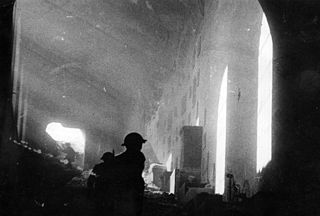
The Battle of Monte Cassino, also known as the Battle for Rome, was a series of four military assaults by the Allies against German forces in Italy during the Italian Campaign of World War II. The objective was to break through the Winter Line and facilitate an advance towards Rome.
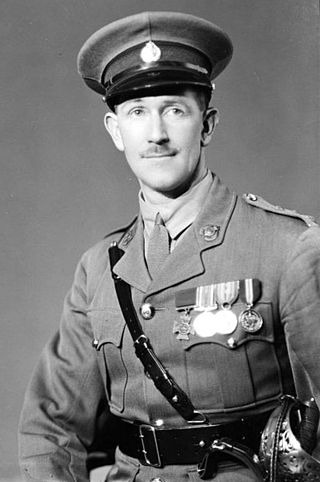
Brigadier Leslie Wilton Andrew, was a senior officer in the New Zealand Military Forces and a recipient of the Victoria Cross, the highest award of the British Commonwealth for gallantry "in the face of the enemy". He received the decoration for his actions during the Battle of Passchendaele in 1917.

The 2nd New Zealand Division, initially the New Zealand Division, was an infantry division of the New Zealand Military Forces during the Second World War. The division was commanded for most of its existence by Lieutenant-General Bernard C. Freyberg. It fought in Greece, Crete, the Western Desert and Italy. In the Western Desert Campaign, the division played a prominent role in the defeat of German and Italian forces in the Second Battle of El Alamein and the British Eighth Army's advance to Tunisia.

Major General Sir Howard Karl Kippenberger,, known as "Kip", was an officer of the New Zealand Military Forces who served in the First and Second World Wars.

Joel Hayward is a New Zealand-born British scholar, academic and writer. He has been listed in the 2023 and 2024 editions of The World's 500 Most Influential Muslims. He has been the Dean of the Royal Air Force College Cranwell and is now the Chief Executive of the Cambridge Muslim College in the United Kingdom.
The National Army Museum is the museum of the New Zealand Army. It was formerly known as the Queen Elizabeth II Army Memorial Museum. It is located on State Highway One, on the southern side of the small military town of Waiouru. The 1300 square metre museum is fortress-looking in design, complete with a bridge and moat. It took the 2nd Field Squadron of the Royal New Zealand Engineers (RNZE) 276 days to build, and was opened in October 1978.

Clive David Hill is a New Zealand author, especially well known for his young adult fiction. His young fiction books See Ya, Simon (1992) and Right Where It Hurts (2001) have been shortlisted for numerous awards. He is also a prolific journalist, writing many articles for The New Zealand Herald.

Albert Ronald Guthrey was a New Zealand local politician. He served as a Christchurch City Councillor for 22 years before being elected Mayor of Christchurch. He was a World War II veteran and he and his family were well-known business operators in Christchurch.
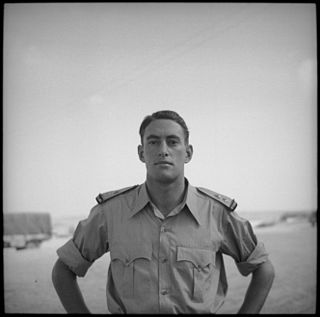
Lieutenant General Sir Leonard Whitmore Thornton, was a senior officer in the New Zealand Army.

The 1st Brigade is currently the largest unit of the New Zealand Army, and contains most of the army's deployable units. The brigade was formed on 13 December 2011 by amalgamating the 2nd Land Force Group and 3rd Land Force Group. Its establishment formed part of the 'Army 2015' package of reforms.

Major General Graham Beresford Parkinson, was a professional soldier in the New Zealand Military Forces who served during the First and Second World Wars.

Major General Sir Keith Lindsay Stewart, was a professional soldier in the New Zealand Military Forces. He served during the First and Second World Wars and was Chief of the General Staff of the New Zealand Military Forces from 1949 to 1952.
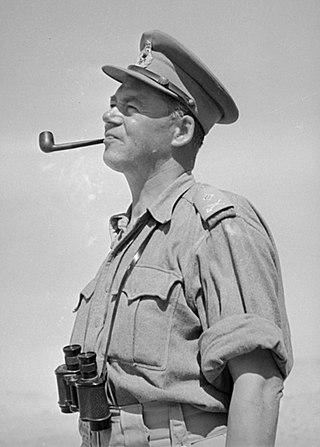
Major-General Lindsay Merritt Inglis, was a New Zealand military officer, lawyer and magistrate. Born in Mosgiel, he volunteered for service in the New Zealand Expeditionary Force during World War I. Inglis served on the Western Front and was awarded the Military Cross for his actions during the Battle of Flers-Courcelette. He ended the war as a company commander and returned to New Zealand in 1919.

Brigadier General William Garnett Braithwaite, was a British Army officer who participated in the Boer War and the First World War.
Leslie Cecil Lloyd Averill was a New Zealand soldier who served during the First World War on the Western Front. After the war, he became a doctor and established a private practice in his hometown of Christchurch. He also served as a medical administrator and community leader.

The 20th Battalion was a formation of the New Zealand Military Forces which served, initially as an infantry battalion and then as an armoured regiment, during the Second World War as part of the 2nd New Zealand Division.
The Official History of New Zealand in the Second World War 1939–45 is a 48-volume series published by the War History Branch of the Department of Internal Affairs which covered New Zealand involvement in the Second World War. The series was published during the period 1949 to 1986. A collection of booklets entitled Episodes and Studies were also published between 1948 and 1954. The Official History of New Zealand in the Second World War 1939–45 was the largest publication project undertaken in New Zealand.
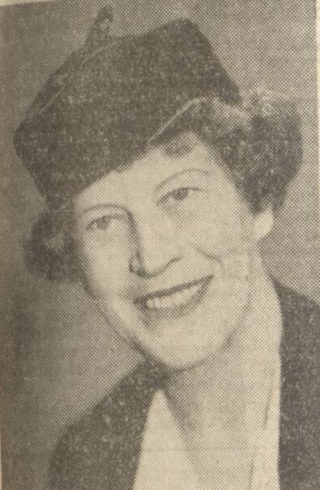
Gladys Sandford was an Australian-New Zealand pioneering driver and aviator. She was the first woman in New Zealand to earn a pilot's licence.
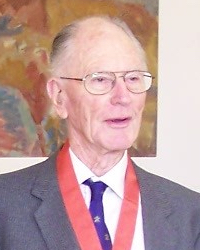
Robin Langford Kay was a New Zealand artist and historian.

Monty Glyn Soutar is a New Zealand historian and author.
This page is based on this
Wikipedia article Text is available under the
CC BY-SA 4.0 license; additional terms may apply.
Images, videos and audio are available under their respective licenses.

















